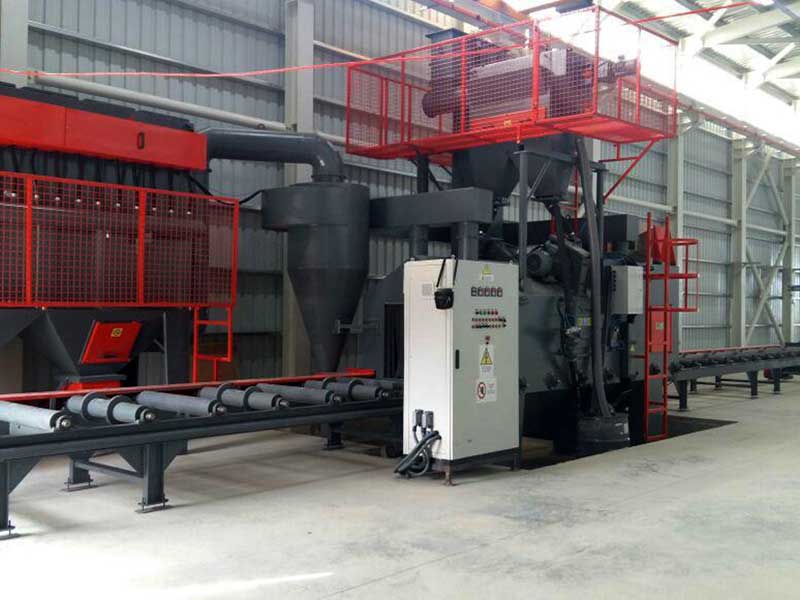
Sheet metal and profile sandblasting plants are special sandblasting systems designed for surface cleaning and preparation of large-sized sheet metal and profile materials, especially used in industries such as steel construction, shipbuilding, automotive and railway. These facilities ensure that materials are free of rust, oxide layers, old paint, and other contaminants, making them suitable for subsequent painting, coating, or other surface treatments.
Working Principle:
Sheet metal and profile sandblasting plants generally work with the following basic principles:
- Transport System:
- Sheet metal and profile materials are transported into the plant by means of conveyors, roller bearings or crane systems.
- Sandblasting Cabinet:
- The materials are passed through a closed cabinet where abrasive materials (steel granules, steel balls, etc.) are sprayed at high speed.
- Abrasive Spraying:
- Abrasive materials, accelerated by compressed air or mechanical force through turbines or nozzles, hit the surface of the materials and remove contaminants.
- Recovery System:
- The abrasive materials used are collected on the floor of the cabinet and cleaned by means of recovery systems (sieves, magnetic separators, etc.) and made ready for reuse.
- Dust Collection System:
- Dust and particles formed during the sandblasting process are separated from the air by high-efficiency filter systems and prevented from harming the environment.
Key Components of the Plant:
- Input and Output Conveyors: Provides the entry and exit of materials to the facility.
- Sandblasting Cabinet: It is the closed area where abrasive spraying is done.
- Abrasive Spray Turbines/Nozzles: Sprays abrasive materials at high speed.
- Abrasive Recovery System: Cleans and recycles the abrasive materials used.
- Dust Collection System: Filters the dust generated during sandblasting.
- Control Panel: Controls all operations of the facility.
Uses:
- Steel Construction:
- Surface cleaning of large steel structural elements (beams, columns, plates).
- Shipbuilding:
- Sandblasting process of ship hull plates and other structural elements.
- Automotive Industry:
- Surface preparation of large chassis parts and other automotive components.
- Railway Industry:
- Cleaning of railway wagons, tracks and other railway equipment.
- Energy Sector:
- Sandblasting of large structures such as wind turbine towers, power transmission lines poles.
Technical Details:
- Turbine Power:
- The power of the turbines affects the blasting speed and efficiency. It depends on the type of material and the desired surface finish.
- Abrasive Material Type and Size:
- The type and size of abrasive material used (steel granules, steel balls, etc.) determine the effectiveness of surface cleaning.
- Conveyor Speed:
- The conveyor speed adjusts the time the materials spend in the blast booth and therefore the blasting intensity.
- Dust Collection Capacity:
- The capacity of the dust collection system controls the cleanliness of the working environment and environmental impacts.
Sheet metal and profile sandblasting plants are critical for surface preparation of large and heavy materials in industrial production processes.




